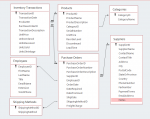HillTJ
To train a dog, first know more than the dog..
- Local time
- Yesterday, 20:07
- Joined
- Apr 1, 2019
- Messages
- 730
Hi friends, i am progressing well with my stock database & have elected to have a field in each product to retain the actual stock of an item. I know the purests disagree with this te hnique.l have a table that captures the new stock item then posts the quantity based upon an update query. I also have a "posted" flag field. I display the "stocked in " items in data sheet format. I currently do the post from the after update event of that flag. My intention is to only post the items once upon selection of the flag (tick box = yes). What's the best way of ensuring this?.

